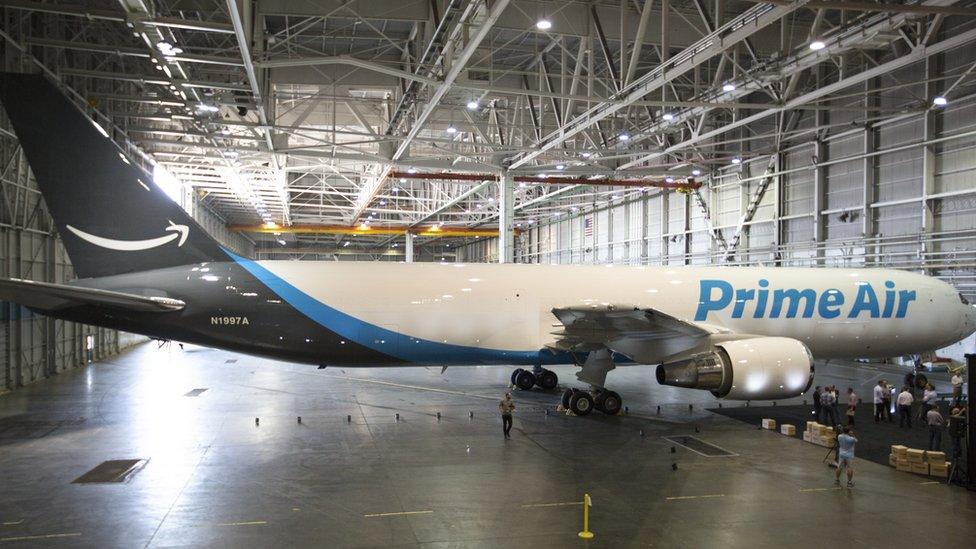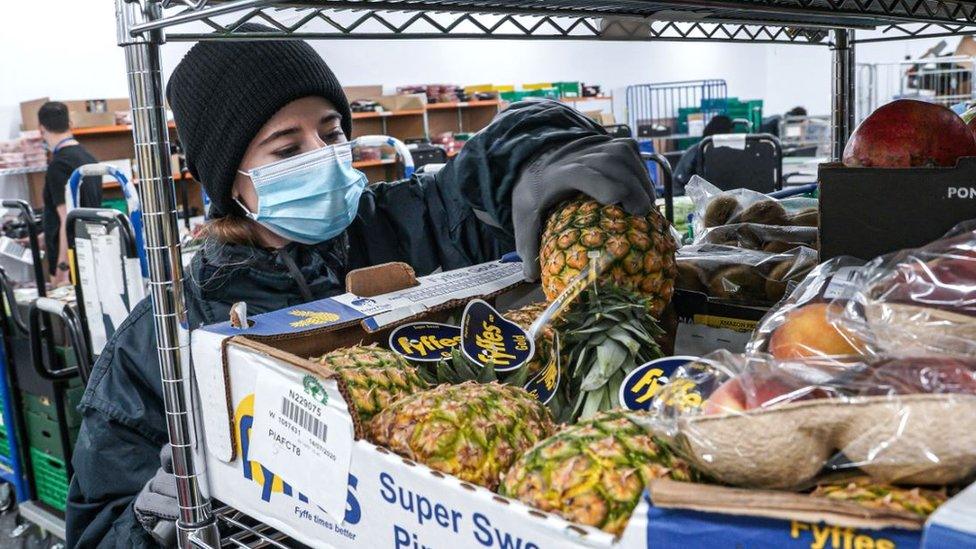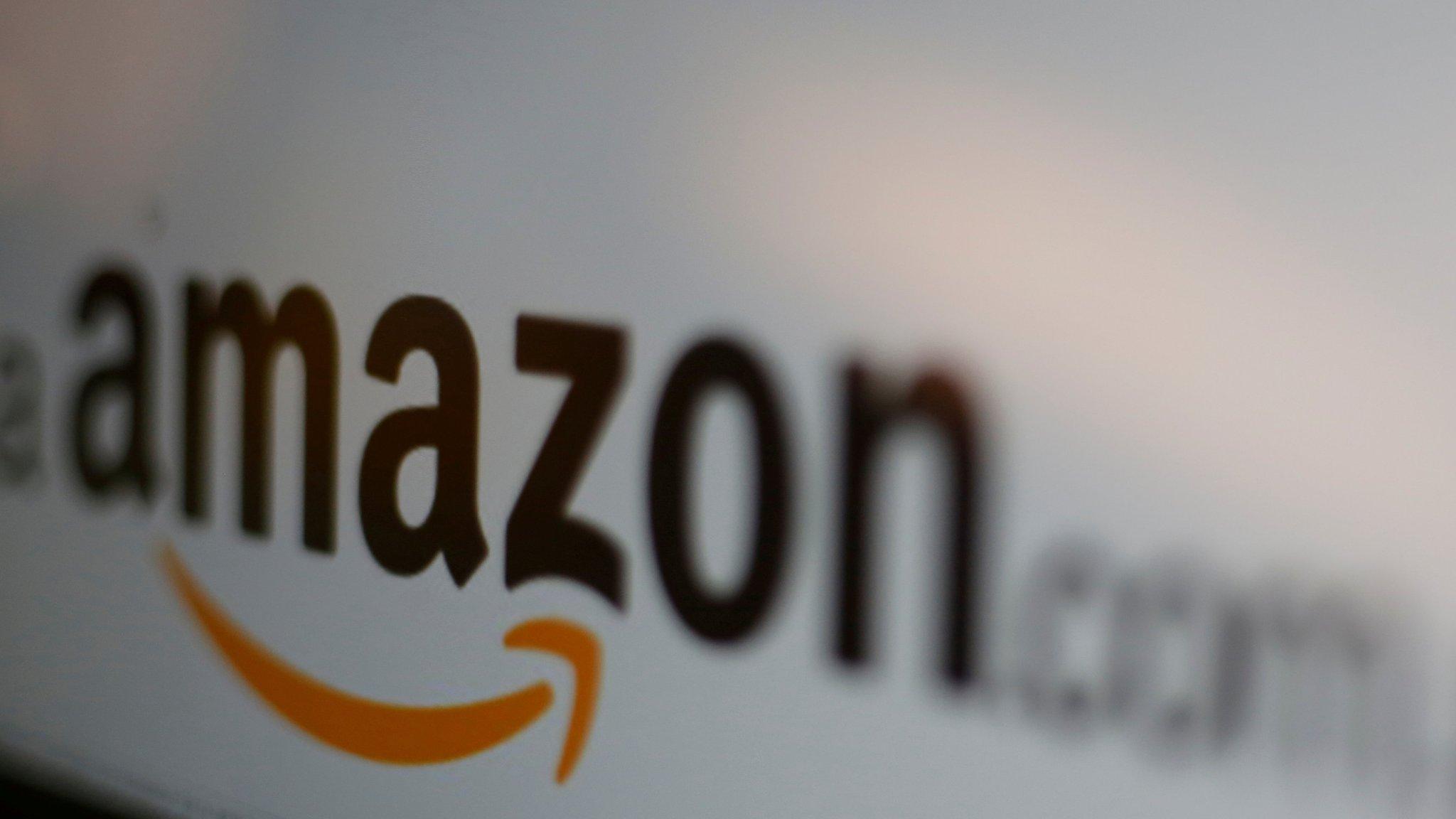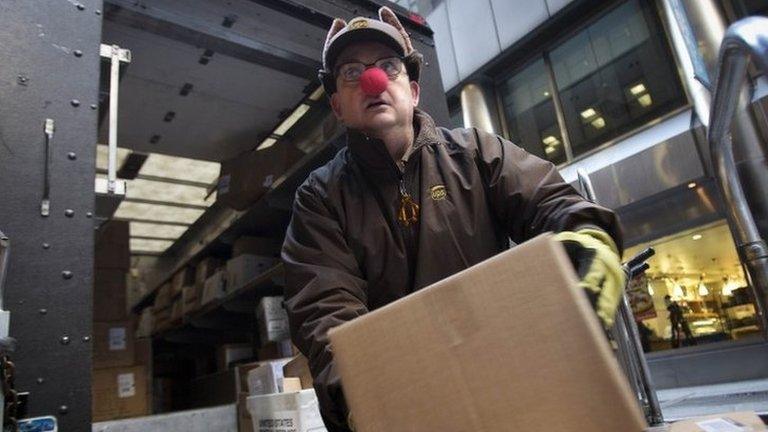Amazon buys its first planes to expand air network
- Published

Amazon Air - previously called Prime Air - has leased planes since 2016
Amazon has bought its first fleet of planes, as it expands its growing air freight network.
The additional 11 Boeing 767-300 planes would "support Amazon's growing customer base", it said.
Amazon's first air operation launched in 2016, but previous planes have been leased.
Experts say buying its own aircraft will allow Amazon become a credible competitor in logistics.
"It is significant that Amazon has purchased the aircraft, as opposed to leasing carriers, as it should lead to lower overall lifetime costs, greater control over the speed, reliability and quality of service, and accelerate its aim of cementing the brand as a genuine player in the competitive world of air freight," said Michelle Mooney, a reporter at Logistics Manager.
Amazon boss Jeff Bezos - estimated to be the richest man in the world - is "using logistics as a secret weapon", said Gonzalo de la Mata, of specialist Amazon consultancy Molzi.
Five things to know about Amazon boss Jeff Bezos
"In the past, the business has found it cheaper to handle logistics itself rather than using third parties, and since 2015 it has built its own global end-to-end logistics network with its own vans, trucks and aircraft.
"The platform is now likely to be a larger supply chain provider than either FedEx or UPS in just a few years, with the potential to launch as an independent carrier in the US - and then perhaps globally.
"Given the data it owns and its proven record of delivering a customer-centric service at scale, Amazon would be a highly credible competitor to existing logistics companies."
Aircraft prices have plummeted over the past year as travel demand diminished amid varying global lockdowns.
Amazon announced it had bought 11 used Boeing 767-300 passenger jets from struggling airlines Delta and WestJet.
"Our goal is to continue delivering for customers across the US in the way that they expect from Amazon, and purchasing our own aircraft is a natural next step toward that goal," said Sarah Rhoads, vice president of Amazon Global Air.
"Having a mix of both leased and owned aircraft in our growing fleet allows us to better manage our operations, which in turn helps us to keep pace in meeting our customer promises."

Amazon wants its planes to deliver packages more efficiently
"Amazon Air is currently only using its aircraft to transport its own volumes and has yet to sell services to third parties," explained Damian Brett, editor of Air Cargo News. "While this has resulted in lost revenues for the likes the UPS and FedEx, Amazon is not yet competing with them directly."
But if Amazon were to start offering air freight services to external parties, it could become more of a threat, he added.
'Global dominance'
"Amazon are establishing global dominance in many fields and it was only matter of time when they addresses the cost of logistics within their framework," said Kate Lester, founder and chief executive of Diamond Logistics.
But she adds that established competitors still retain their value, "particularly as people choose not to subscribe to Amazon for commercial or ethical reasons."
"It's all about choice. For consumers and retailers," she added.
Growing fleet
A report by Chicago's DePaul University last year, external estimated that Amazon's fleet was likely to grow to 200 aircraft by 2028.
"At a time when many other airlines are downsizing due to the pandemic, Amazon's push for faster and cheaper at-home delivery is moving ahead on an ambitious timetable," said the report. "Amazon Air's robust expansion makes it one of the biggest stories in the air cargo industry in years."
However, the report said its network was still less well-developed its competitors FedEx and UPS:
In 2019, Amazon delivered an estimated 2.3 billion packages in North America, largely comprised of goods purchased on its own platform.
That's compared to 3.1 billion and 4.7 billion total packages delivered - purchased through many different websites - on FedEx and UPS, respectively.
However, analysts at US bank Morgan Stanley - first reported by CNBC, external - estimated that Amazon would overtake UPS and FedEx in the total volume of parcels delivered in the US by 2022.
- Published28 July 2020

- Published5 June 2019

- Published9 February 2018

- Published25 December 2013
